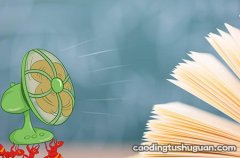笔记本电脑怎么格式化清除所有数据 笔记本电脑怎么格式化
第一次听说格式化 , 是清理电脑磁盘时 , 以为格式化就是清空一切 , 重回自由 , 后来才知道 , 格式化 , 是另一种妥协 。

文章插图

文章插图

文章插图

文章插图

文章插图

文章插图
图4 .format方式格式化字符串符号列表
.format方法几种常见的用法如下:
1)使用位置符号 。
print('The number {0:,} in hex is: {0: #x}, the number {1} in oct is {1:#o}'.format(4746,45))# The number 4,746 in hex is:0x128a, the number 45 in oct is 0o55其中{0}表示forma方法中对应的第一个参数 , {1}表示format方法对应的第二个参数 , 依次递推
2)使用名称 。
print('the max number is {max}, the min number is {min}, the average number is {average:0.3f}'.format(max=189, min=12.6, average=23.5))# the max number is 189, the min number is 12.6, the average number is 23.500
3)通过属性 。
class Customer(object):def __init__(self, name, gender, phone):self.name = nameself.gender = genderself.phone = phone# 通过str()函数返回格式化的结果def __str__(self):return 'Customer({self.name},{self.gender},{self.phone})'.format(self=self)print(str(Customer('Lisa','Female','67889')))# Customer(Lisa,Female,67889)
4)格式化元组的具体项 。
point=(1,3)print('X:{0<0>};Y:{0<1>}'.format(point))# X:1;Y:3
第三部分:结论
在了解了两种字符串格式的基本用法后 , 我们发现还是要尽量使用format方式而不是%操作符来格式化字符串 。
理由一:format方式在使用上较%操作符更为灵活 。使用format方式时 , 参数的顺序与格式化的顺序不必完全相同 。如:
print('The number {1} in hex is:{1:#x}, the number {0} in oct is {0:#o}'.format(4746,45))# The number 45 in hex is:0x2d, the number 4746 in oct is 0o11212上例中格式化的顺序为{1} , {0} , 其对应的参数申明的顺序却相反 , {1}与45对应 , 而用%方法需要使用字典形式才能达到同样的目的 。
理由二:format方式可以方便地作为参数传递 。
weather = <('Monday','rain'),('Tuesday','sunny'),('Wednesday','sunny'),('Thursday','rain'),('Friday','cloudy')>formatter = "Weather of '{0<0>}' is '{0<1>}'".formatfor item in map(formatter, weather):print(item)#Weather of 'Monday' is 'rain'Weather of 'Tuesday' is 'sunny'Weather of 'Wednesday' is 'sunny'Weather of 'Thursday' is 'rain'Weather of 'Friday' is 'cloudy'
理由三:%最终会被.format方式所代替 。这个理由可以认为是最直接的原因 , 在Python3.0中.format方法是推荐使用的方法 , 而之所以仍然保留%操作符是为了保持向后兼容 。
理由四:%方法在某些特殊情况下使用时需要特别小心 。
item_name = ('mouse', 'mobilephone','cup')print('item_list are %s'%(item_name))# 使用%方法格式化元组# TypeError: not all arguments converted during string formattingprint('item_list are %s'%(item_name,))# 注意后面的逗号# item_list are ('mouse', 'mobilephone', 'cup')print('item_list are {}'.format(item_name))# 使用format方法直接格式化不会抛出异常# item_list are ('mouse', 'mobilephone', 'cup')该例子本意是把item_name看做一个整体来进行格式化 , 但直接使用时却抛出TypeError , 对于%直接格式化字符的这种形式 , 如果字符本身为元组 , 则需要使用在%使用(item_name,)这种形式才能避免错误 , 注意逗号 。
【笔记本电脑怎么格式化清除所有数据 笔记本电脑怎么格式化】关注微信公众号“Python小镇” , 发现更多干货知识!
推荐阅读
- 宝宝感冒了怎么办
- 电视屏幕怎么区分硬屏软屏
- 华为电脑怎么下载音乐到u盘 电脑怎么下载音乐到u盘
- 光遇禁阁彩虹蜡烛怎么得
- 联想笔记本G480 联想笔记本g480系统
- word竖向求和怎么操作 word竖向求和
- 电脑怎么扫描文件 电脑怎么扫描纸质文件
- 苹果12怎么截长图 苹果手机如何截长图
- 纱窗拆下来怎么安上去
- 电脑截屏的快捷键是什么 截屏的快捷键是什么












